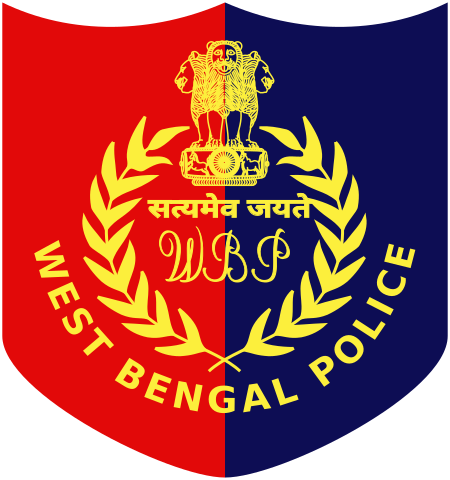
Traffic Rules (ট্রাফিক নিয়মাবলী)
কিছু ট্রাফিক অপরাধ:
| ক্রমাঙ্ক | বিবরণ | ডব্লিউ বি এম ভিআর / সিএমভির / এমভি আইনের ধারা |
|---|---|---|
| ১ | লালবাতিতে না থামা | ১১৯ /১৭৭ |
| ২ | ট্রাফিক সঙ্কেত অমান্য করা | ১১৯ /১৭৭ |
| ৩ | প্রতিবন্ধকতা সৃষ্টিকারী বেঠিক পার্কিং | ১২২ /১৭৭ |
| ৪ | হেলমেট বিহীন গাড়ি চালানো | ১২৯ /১৭৭ |
| ৫ | নাম্বারপ্লেটের বেঠিক প্রদর্শন | সিএমভিআর ৫০ / ১৭৭ |
| ৬ | ত্রুটিপূর্ণ নাম্বারপ্লেটসহ গাড়ী চালানো | সিএমভিআর ৫০ / ১৭৭ |
| ৭ | স্টপলাইন অমান্য করা | সিএমভিআর ১১৩ (১)/ ১৭৭ |
| ৮ | অ-স্বীকৃত ব্যক্তির উপর গাড়ীচালনা ন্যস্ত করা | ৫ / ১৮০ |
| ৯ | অপ্রাপ্তবয়স্ককে দিয়ে গাড়ী চালানো | ৪ / ১৮১ |
| ১০ | লাইসেন্সবিহীন গাড়ি চালানো | ৩/১৮১ |
| ১১ | অত্যধিক গতিতে গাড়ি চালানো | ১১২ / ১৮৩(১) |
| ১২ | বিপজ্জনকভাবে গাড়ি চালানো | ১৮৪ |
মোটর গাড়ির কিছু অপরাধ –
| ক্রমাঙ্ক | বিবরণ | এমভি আইনের ধারা |
|---|---|---|
| ১ | দূষণ নিয়ন্ত্রণ শংসাপত্র ছাড়া গাড়ি চালানো | ১১৫(৭)/১৯০(২) |
| ২ | পণ্য পরিবহনের গাড়িতে মাত্রাতিরিক্ত বোঝা চাপানো | ১১৩ / ১৯৪ |
| ৩ | আজ্ঞাপত্র (পারমিট) বিহীন বা আজ্ঞাপত্রে উল্লিখিত শর্ত লঙ্ঘন | ৬৬ /১৯২ এ |
| ৪ | নিবন্ধনবিহীন (Without registration)গাড়ি চালানো | ৩৯ / ১৯২ |
| ৫ | বীমাবিহীন গাড়ি চালানো | ১৪৬ /১৯৬ |
| ৬ | সক্ষমতা শংসাপত্র (ফিটনেস সার্টিফিকেট) বিহীন গাড়ি চালানো | ৫৬ /১৯২ এবং ৩৯ / ১৯২ |
- কোন পরিস্থিতিতে আপনার গাড়ীর বিরুদ্ধে মামলা দায়ের করা যেতে পারে?
নিয়ন্ত্রন, নজরদারি এবং মোটর যানবাহন আইন ও বিধিসমূহ বলবৎ করার জন্য এনফোর্সমেন্ট উইং তার দলবল নিয়োগ করে। এই দলগুলির কেউ আপনাকে থামাতে পারে। আপনাকে নিম্নলিখিত নথিগুলির আসল কপি দেখাতে বলা হতে পারে:
- ড্রাইভিং লাইসেন্স
- রেজিস্ট্রেশান সার্টিফিকেট
- ইনসিওরেন্স সার্টিফিকেট
- দূষণ নিয়ন্ত্রণ সার্টিফিকেট
- পারমিট (শুধুমাত্র বাণিজ্যিক যানবাহন জন্য)
- ফিটনেস সার্টিফিকেট (শুধুমাত্র বাণিজ্যিক যানবাহন জন্য)
- রোড ট্যাক্স রসিদ
- আপনার গাড়ির বিরুদ্ধে কোন মামলা দায়ের করা হলে কি হবে?
নিম্নলিখিত বিবরণ সম্বলিত বাজেয়াপ্ত করা জিনিসের একটি তালিকা আপনাকে দেওয়া হবে:
- কোন কর্তৃপক্ষের সামনে আপনাকে হাজিরা দিতে হবে
- সংঘটিত অপরাধের সাধারণ বিবরণ
- যে তারিখের মধ্যে আপনাকে যা হাজিরা দিতে হবে
- অপরাধীর নাম এবং ঠিকানা
- বাজেয়াপ্তকারী কর্মকর্তার নাম এবং স্বাক্ষর
- বাজেয়াপ্ত নথির বিবরণ
এছাড়াও অবমাননার গুরুত্বের ওপর নির্ভর করে আপনার গাড়ী বাজেয়াপ্ত করা হতে পারে।
- কিভাবে মামলার নিষ্পত্তি হতে পারে?
ক) মিটমাটের মাধ্যমে মামলার নিষ্পত্তি
কর্তৃপক্ষের সামনে হাজির হয়ে লিখিত আবেদন করে এবং বিজ্ঞাপিত অঙ্ক জমা দিয়ে।
খ) আদালতে মামলার নিষ্পত্তি
বিচার বিভাগীয় আদালতে নিষ্পত্তি করার জন্য আপনার সুযোগ আছে।
- কিভাবে আপনি আপনার বাজেয়াপ্ত নথি ছাড়াতে পারেন?
- যদি আদালতে মামলার নিষ্পত্তি করা হয়, তাহলে আদালত থেকে।
- মামলা মিটমাট করা হলে সংশ্লিস্ট কর্তৃপক্ষের অথবা আই. ও.’র কাছ থেকে।
- কিভাবে আপনি আপনার বাজেয়াপ্ত গাড়ি ছাড়িয়ে ফেরত পাবেন?
জরিমানা প্রদানের পরে আপনাকে গাড়ীর রিলিজ অর্ডার দেওয়া হবে এবং আপনাকে সেটির সঙ্গে নিয়ে জিম্মাদারের সাথে যোগাযোগ করতে হবে এবং বাজেয়াপ্ত গাড়ীর ছাড়ানো নিশ্চিত করতে প্রয়োজন অনুযায়ী কাস্টোডিয়াল ফি দিতে হবে।


